Razer reveals BlackWidow X, improved switches and Cherry MX models
March 24, 2016 | 15:05
Companies: #razer

Razer announces BlackWidow X keyboards
Razer today announced a new line of mechanical gaming keyboards, the BlackWidow X family, to be sold alongside the existing BlackWidow range. BlackWidow X keyboards sport an exposed metal faceplate and raised keys, and every one of the five current BlackWidow keyboards will now have an X variant as well, sold for $10 below the existing MSRPs.What Razer has done in designing the BlackWidow X range is, essentially, remove the plastic top cover and expose the existing, military grade metal (a very stiff carbon steel) that all BlackWidow keyboards have. Obviously, it has to be tidied up a little, and it has been given a matt, anti-fingerprint finish, but otherwise it's the same material.
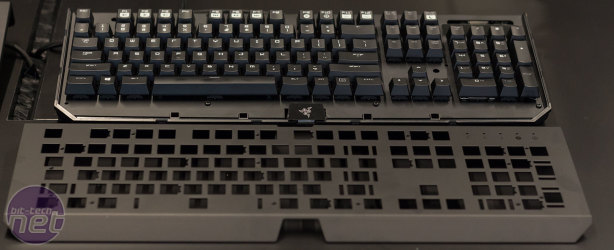
Click to enlarge - A BlackWidow Ultimate with the plastic top cover removed and the new matt, metal faceplate used for full-size BlackWidow X keyboards
The result is a look that will undoubtedly be compared to Corsair's family of keyboards going back to the Vengeance K60, although with the Strafe series Corsair has branched away from using this look exclusively and other manufacturers, like Cougar, have also used it. Either way, anyone looking to buy a BlackWidow, which Razer was keen to highlight is still the number one best selling mechanical keyboard globally, now has a choice between raised and embedded keys in addition to the previous choice between full size or tenkeyless, Clicky or Silent switches and different backlight options. Another consequence is that lighting effects won't be as bold as the BlackWidow family, where the reflective coating on the metal plate and top cover helps to boost the power of the LEDs.
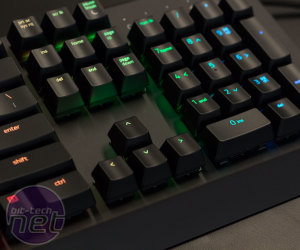
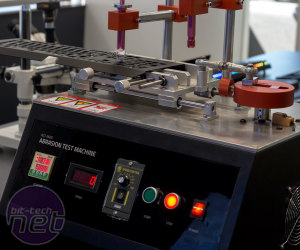
Click to enlarge - Close-up of BlackWidow X Chroma (left) and abrasion testing its faceplate (right)
The lower MSRP isn't just a result of using less materials either, as a few features have been removed too. The BlackWidow X keyboards will not have any macro keys (though the main keys can all still be reprogrammed as usual) nor will they have any pass-through ports. This means they only need a single USB connection, allowing Razer to make the cable thin enough to utilise cable routing channels that have been added to the underside.
An update on the Razer Mechanical Switch
As many of you will know, in 2014 Razer began producing the Razer Mechanical Switch. These are based on existing Cherry MX designs but have been altered to include optimised actuation and reset points in a bid to make them more gaming suitable. It has since produced over 250 million of them.In producing these switches, Razer has worked with multiple third party partners. The company tends to shy away from naming these, but the presence of the Kailh logo on its switches has always been a giveaway of one. However, that's changing now – in line with its BlackWidow announcement, Razer has revealed that its switches are now essentially produced in-house. We say essentially since it still doesn't actually own an entire factory, but over the last couple of years it has made heavy investments into the production of the Razer Mechanical Switch to the point where it is now responsible for all stages of the process.
Razer has its own research and development team, is responsible for the production of all the individual switch components, and owns production lines and the tooling on them, again with its own staff overseeing everything. It has invested also in QA, and even flew us and some of this testing equipment (scaled down) to its offices in San Francisco to show us. This included one which can track the exact force curve of a switch through the full action, so that actuation force as well as actuation and reset points can be precisely monitored. There's also the endurance testing, which does millions of key presses at varying speeds to simulate long-term use. In QA, force curves are traced both before and after endurance testing to ensure consistency, and machines at the factory are calibrated three times a day. We asked Razer to specify its variance levels and were told +/- 0.4mm for travel and +/- ~2.5g for force, with a note that these are the widest possible levels and the majority are much tighter.
The result of this evolving production process is that Razer is now in a position to claim an 80 million keystroke lifespan for its switches, compared to 60 million before (and 50 million for Cherry MX). Also, there will now be no third party logos on the switches – we have an early sample of the BlackWidow X Chroma (reviewing coming soon) and can confirm this. Ultimately, the message is that Razer Mechanical Switches are very far removed from any off-the-shelf third party switches you might find elsewhere.
While 80 million versus 60 million may seem like a distinction without a difference, Razer says that for hardcore gamers, at least, this isn't the case, and it has the data to back this up thanks to the opt-in stat tracking in Razer Synapse. Unlike typing, where the load across keys is quite even, gaming introduces repeated actuations and a very imbalanced load in specific zones – the WASD keys will get pressed hundreds or even thousands of times in a single FPS session, for example, which adds up when you're gaming every day. That said, for most of us, the difference is unlikely to make, well, a difference, but additional QA and endurance testing is certainly no bad thing.
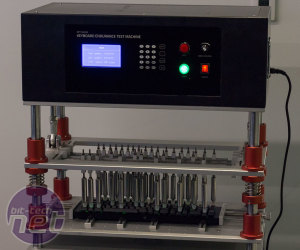
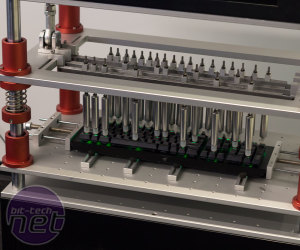
Click to enlarge - A stripped down version of the endurance testing machine that actuates every switch 80 million times over multiple weeks
Cherry MX switches return to Razer keyboards
With all this talk of Razer Mechanical Switches, it's easy to forget that Razer was using Cherry MX switches when it first launched the BlackWidow in 2010, somewhat kick-starting the whole mechanical gaming keyboard trend. The final bit of news we have to share with you today is that, due to popular demand, Razer will be reintroducing Cherry MX Blue switches to select BlackWidow lines, namely the BlackWidow Ultimate, BlackWidow X Ultimate and BlackWidow X Tournament Edition. Flagship Chroma-enabled keyboards are sticking to Razer's switches exclusively.Cherry MX Blue keyboards will be retailing for $10 less than their Razer switch counterparts, primarily because there is no research and development invested by Razer in the switch. One result of this is that the BlackWidow X Tournament Edition with Cherry MX Blue switches will retail for just $59. Razer says it does not believe in linear switches, but when we asked why it wasn't also offering tactile Cherry MX Brown switches as an option, we were told that the Razer Silent switch meets this need, and that it's specifically the Blue switch that those wanting a BlackWidow mainly for typing have been demanding.

MSI MPG Velox 100R Chassis Review
October 14 2021 | 15:04

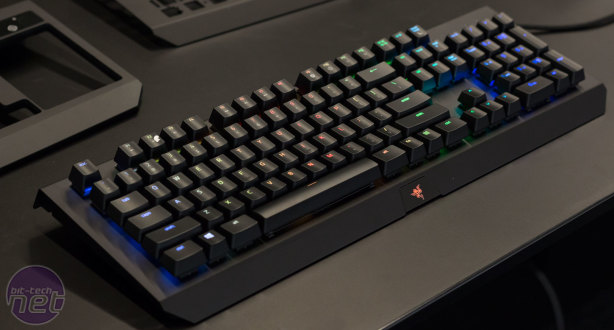
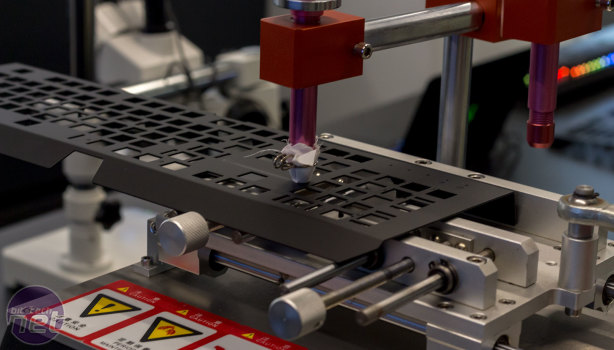
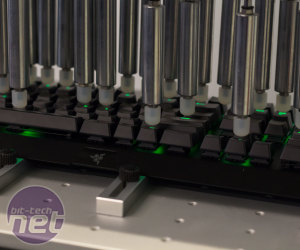
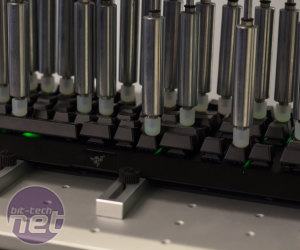
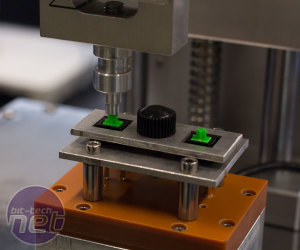
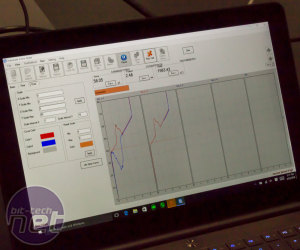







Want to comment? Please log in.